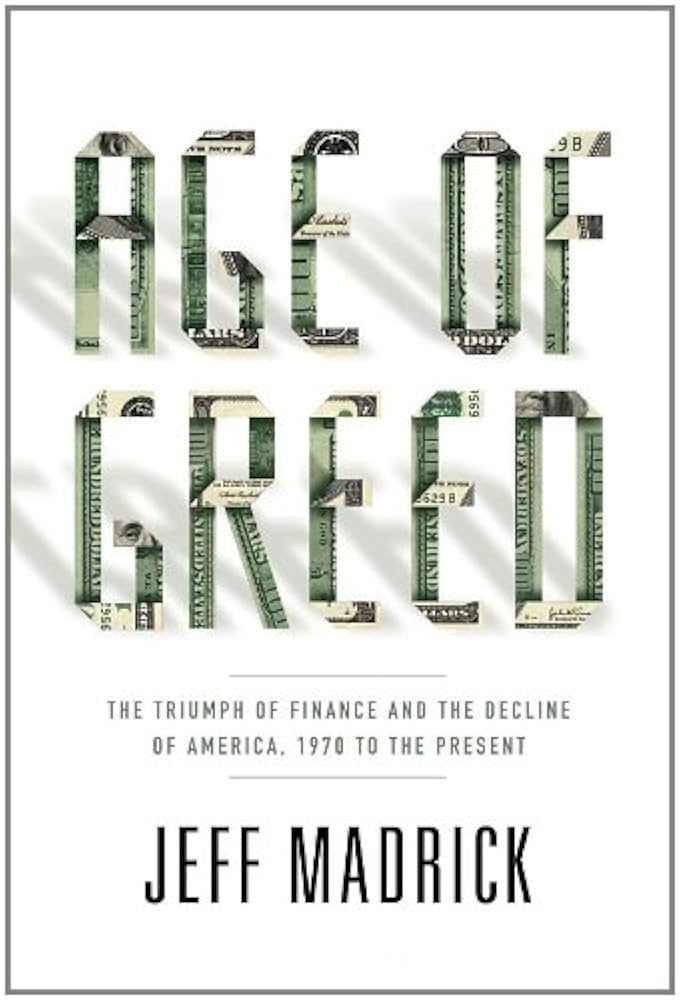What’s it about?
The Age of Greed: The Triumph of Finance and the Decline of America, 1970 to the Present traces how the U.S. economy shifted from broadly shared prosperity to winner-take-most finance. Through vivid profiles of bankers, politicians, and CEOs, Jeff Madrick shows how deregulation, tax changes, and a new ideology of shareholder value elevated short-term gain over long-term health—reshaping not only markets, but also our politics and everyday lives.
Book Review: The Age of Greed

by Jeff Madrick
Published: 2011
Review published: September 2025
What I Learned / My Take
1. Greed didn’t suddenly appear; we re-engineered the rules to reward it. From the 1970s onward, policy and culture tilted toward “markets know best,” loosening guardrails that once kept excess in check.
2. Finance went from serving the real economy to steering it. As trading profits, leverage, and financial engineering exploded, capital allocation chased quarterly metrics instead of productive investment.
3. Personalities mattered. Madrick’s portraits—of dealmakers, deregulators, and celebrity CEOs—show how ambition plus a permissive system can scale personal risk-taking into systemic risk.
4. Inequality isn’t an accident; it’s a policy outcome. Tax cuts at the top, weakened labor power, and stock-based pay funneled gains upward, leaving social insurance and public investment underfunded.
5. Crises were features, not bugs. From savings-and-loan failures to the 2008 meltdown, repeated booms and busts reveal what happens when oversight, ethics, and accountability trail innovation.
Scenes and Images that Stuck with Me:
- Trading floors buzzing as complex products outpace the regulators trying to understand them.
- Boardrooms where “shareholder value” justifies layoffs and buybacks—while executive pay soars.
- Congressional hearings after each crisis: solemn vows to fix things, followed by incremental reforms and a quick return to business as usual.
- Ordinary families riding the housing boom—then watching paper wealth vanish, jobs disappear, and retirement plans shrink.